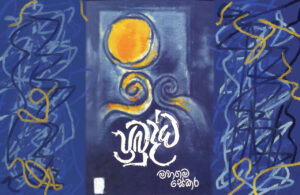
This phenomenon prompts further reflection on what drives ethno-religious violence in Sri Lanka. Despite the change of government, chronic violence against religious minorities has continued throughout the country. Yet, more than two years later this promise is yet to be realised. The democratic transition of January 2015 promised an end to ethno-religious violence in Sri Lanka. I also contend that modern Indian and Western notions of meter are nowadays often mapped onto Sinhala drumming by non-Beravā, the result being that a tradition of sacred speech is slowly being transformed into music-thus threatening the acceptability of drum offerings in the ritual context. Drum offerings for the Buddha and deities more closely approximate unmetered speech than drum offerings for demons (yakku). I argue that because of Buddhism’s Seventh Precept-which prohibits reveling sensuously in music and dance-Sinhala drumming was constructed as speech rather than music so that it would be acceptable as an offering to the Buddha and deities. The second article provides an analysis of drumming in three low-country (southern coastal) Sinhala Buddhist rituals.

In the first of my two articles, I consider the “problem” of Sinhala meter set in an introduction to Sinhala Buddhist ritual, a discussion of the relationship between music and Theravada Buddhism, and a history of Sinhala drumming-a long prologue that is warranted, I suggest, because of the lack of studies of Sri Lanka in ethnomusicology and the prevalence of misunderstandings in the literature on the role of music in Theravada Buddhism. Sri Lankan musicologists have long been aware of the genre’s metric ambiguity, but they are not in agreement on how to understand it.

All this gives Sinhala drumming a unique feel: to outsiders, many rhythms appear uncountable. Even when a seemingly straightforward beat cycle is performed, it may be stretched to match the duration of the drum word. In any given padaya (the singular), several aksaras will not match up with a beat, its seeming subdivisions, or the pulse. However, there is no word for “meter” or “beat cycle” in the tradition (the pan-South Asian term tala is not used). Sometimes the drumming resembles unmetered speech other times, a pulse or beat cycle sounds present.

The genre’s rhythms are generated by drum syllables (aksaras) of long and short duration (guru and laghu) set in lines of drum poetry (padas). This is due in part to the unique approach to rhythm and meter found in the rituals of a caste called the Beravā, members of the island’s Sinhala Buddhist ethnic majority. Video examples can be found here: In two conjoined articles, I argue that Sri Lanka-long passed over in ethnomusicology classes as one proceeds from India to Indonesia or vice-versa-is worthy of gaining a strong foothold in our field.


 0 kommentar(er)
0 kommentar(er)
